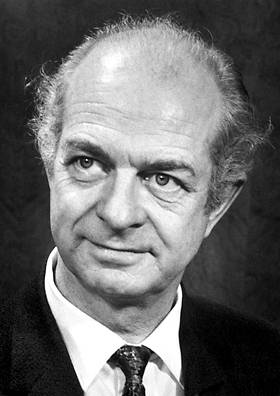
FAQ About Linus Pauling

Who was Linus Pauling?
Linus Pauling was a distinguished American chemist, biochemist, peace activist, author, and educator. He is renowned for his pioneering work in the fields of quantum chemistry and molecular biology and is one of the few individuals to have been awarded two unshared Nobel Prizes. His contributions to science and peace have left a significant legacy.

What Nobel Prizes did Linus Pauling win?
Linus Pauling was awarded the Nobel Prize in Chemistry in 1954 for his research into the nature of the chemical bond and its application to the elucidation of the structure of complex substances. He also won the Nobel Peace Prize in 1962 for his efforts in campaigning against nuclear weapons testing, marking him as the only person to receive two unshared Nobel Prizes.

What are Linus Pauling's significant contributions to chemistry?
Linus Pauling made several groundbreaking contributions to chemistry, including his research on chemical bonds, the nature of ionic and covalent bonds, and the rules of valence. He also developed the concept of hybridization of atomic orbitals and was instrumental in the discovery of the alpha-helix structure of proteins.

How did Linus Pauling contribute to molecular biology?
Linus Pauling's contributions to molecular biology are particularly highlighted through his work on the structure of proteins. His discovery of the alpha-helix and beta-sheet structures was crucial for understanding protein chemistry. His work laid the foundation for future discoveries in the field, including the structure of DNA.

What was the influence of Linus Pauling's peace activism?
Linus Pauling was a tireless advocate for peace and against nuclear weapons testing. Through his activism, including speeches, writings, and petitions like the 'Appeal to stop the arms race,' he significantly influenced public opinion and policy regarding nuclear disarmament. His efforts contributed to the Partial Nuclear Test Ban Treaty in 1963.

Why did Linus Pauling receive the Nobel Peace Prize?
Linus Pauling received the Nobel Peace Prize in 1962 for his vigorous efforts to restrict the atmospheric testing of nuclear weapons, an advocacy that helped raise global awareness about the dangers of radiation and nuclear war. His campaign played a pivotal role in the negotiation and signing of treaties that aimed to limit nuclear tests.

What is Linus Pauling known for in quantum chemistry?
In quantum chemistry, Linus Pauling is best known for his work on the nature of the chemical bond. He introduced the concept of resonance and the hybridization of atomic orbitals, drastically enhancing our understanding of chemical interactions. These concepts have become fundamental to modern chemistry.

How did Linus Pauling's work influence the understanding of DNA?
While Linus Pauling did not discover DNA, his research on protein structures, specifically the alpha-helix, influenced the scientific community's approach to studying the complex structure of DNA. His theoretical work laid the groundwork for the later discovery of DNA's double helix structure by Watson and Crick.

What books did Linus Pauling write?
Linus Pauling authored several influential books, including 'The Nature of the Chemical Bond,' which remains a significant text in the field of chemistry. Other notable works include 'General Chemistry,' 'Vitamin C and the Common Cold,' and 'No More War!' which addresses his peace activism.

Did Linus Pauling have any controversial views?
Linus Pauling became a controversial figure later in his career due to his advocacy for the health benefits of high doses of vitamin C, which he claimed could prevent colds and even treat cancer. While his views triggered widespread debate and extensive research, they have not been universally accepted within the scientific community.

Where did Linus Pauling conduct most of his research?
Linus Pauling conducted much of his research at the California Institute of Technology (Caltech), where he was a faculty member for many years. He also held positions at various universities and research institutions worldwide during his illustrious career.

What is the alpha-helix structure discovered by Linus Pauling?
The alpha-helix is a common motif in the secondary structure of proteins, discovered by Linus Pauling and his colleagues. It is a right-handed coil where every backbone N-H group forms a hydrogen bond with the backbone C=O group of the amino acid located three or four residues earlier along the backbone.

How did Linus Pauling impact public health advocacy?
Through his advocacy for vitamin C and his concerns about nuclear fallout, Linus Pauling significantly impacted public health awareness. Although some of his nutritional claims about vitamin C remain debated, his emphasis on preventative medicine and public health awareness made lasting contributions to the field.

What was Linus Pauling's early life like?
Linus Pauling was born in Portland, Oregon, in 1901. Displaying an early interest in science and experimentation, he enrolled in Oregon State University, where he studied chemical engineering. His academic journey and innate curiosity led him to become one of the most influential scientists of the 20th century.

How did Linus Pauling's work impact education and academia?
Linus Pauling had a profound impact on education and academia, not only through his research and discoveries but also through his textbooks and teaching philosophy. His books and lectures influenced generations of chemists, and his interdisciplinary approach encouraged collaborative and integrative methods in scientific research and education.

What were the major influences on Linus Pauling's scientific work?
Some major influences on Linus Pauling's work included early exposure to chemical engineering at Oregon State University, mentorship under prominent scientists like Arnold Sommerfeld and Richard Tolman, and his interdisciplinary approach, which combined aspects of physics, chemistry, and biology to understand chemical bonding and structure.

Why is Linus Pauling considered a pioneer in the study of vitamin C?
Linus Pauling is considered a pioneer in the study of vitamin C because he advocated for its use in preventing colds and treating various illnesses, such as cancer, which sparked international research interest. His publications on the topic were among the first to suggest that vitamin C supplementation could have broader health benefits.

How did Linus Pauling's views on nuclear disarmament evolve over time?
Linus Pauling's views on nuclear disarmament evolved significantly throughout his lifetime. Initially focused on educating the public and policymakers about the dangers of nuclear weapons, his activism grew into a broader campaign for peace, influencing international treaties and contributing to the ethos of 20th-century anti-nuclear movements.

What methodologies did Linus Pauling use in his research?
Linus Pauling utilized a combination of theoretical models and experimental data in his research. He employed quantum mechanical principles to elucidate the nature of chemical bonds and integrated findings from X-ray crystallography and spectroscopy to advance his molecular studies. His innovative methodologies set new standards in chemical research.

Did Linus Pauling collaborate with other notable scientists?
Yes, Linus Pauling collaborated with many notable scientists throughout his career. These collaborations included working with Robert Corey on protein structure, with Emile Zuckerkandl on molecular evolution, and correspondence with other luminaries like Albert Einstein. Such collaborations enriched his work and broadened its impact.
